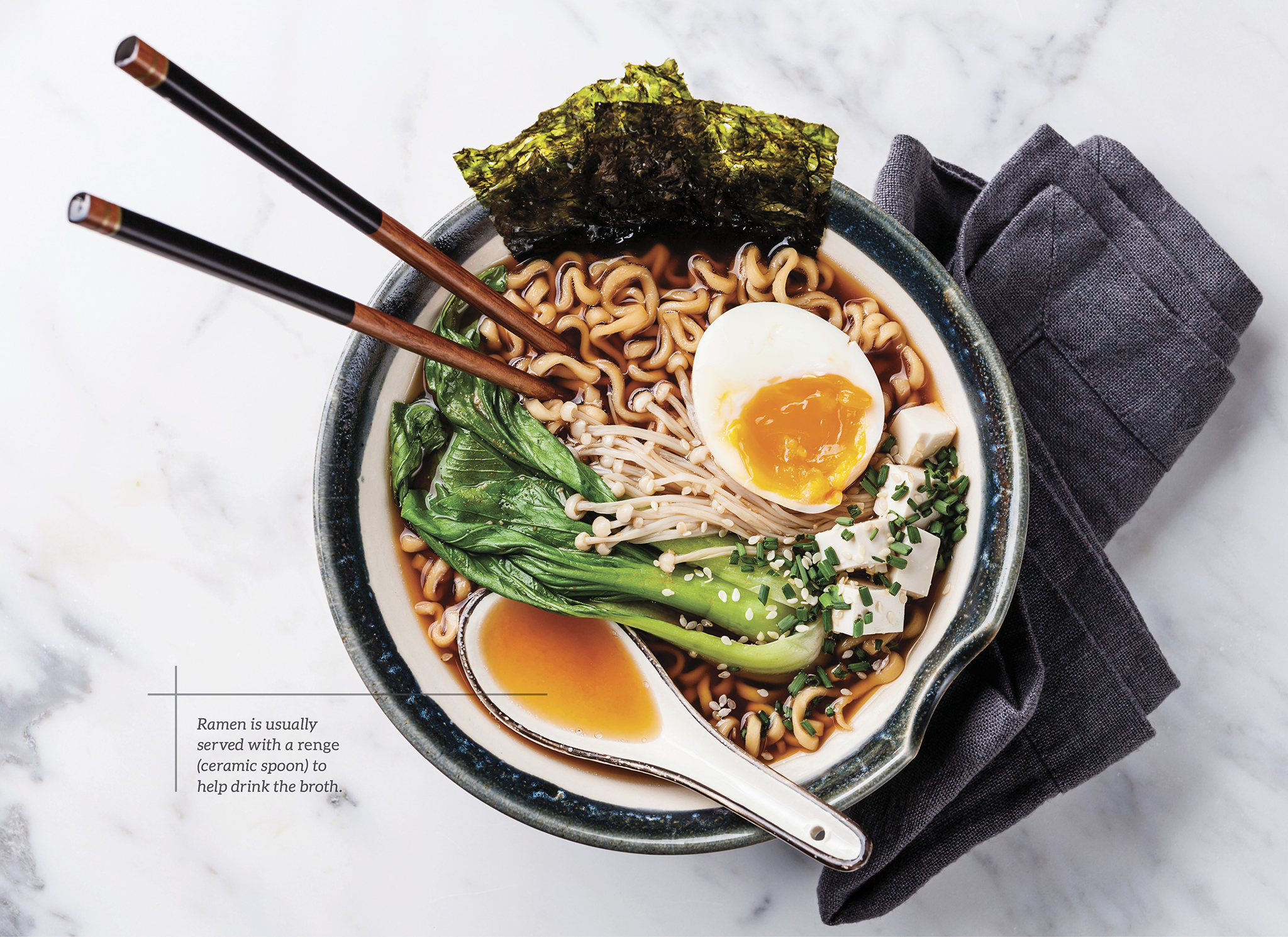g Edible Japan g Contents
麺
noodles
A national institution

D Shoyu ramen broth is based on soy sauce.
Eaten at home, at no-frills stands, in restaurants, for lunch or dinner, hot or cold, spiced or subtle, noodles (men) in Japan come often and in numerous guises.
Of all the many noodle varieties in Japan, it’s ramen that sits at the head of the table. It was first imported from China in the 19th century, when Japan reopened itself to the world after centuries of near- isolation, and today there are more than 50,000 ramen restaurants across the country. There are numerous types of ramen styles, which vary depending on the combinations of chicken, pork, fish, and vegetables used in their broths. Tonkotsu (or Hakata) ramen, for example, gets its distinctive milky look from its pork bone base, while the thickness of Sapporo ramen comes from the addition of miso (fermented soybean paste) to the broth. Shoyu ramen—the most common of all—has a clear brown broth because the chicken and vegetable base has soy (shoyu) added to it.
Other variations include soba, a brownish noodle made mainly with buckwheat flour and with a similar thickness and length to spaghetti. Typically it’s served chilled with a dipping sauce or in a hot broth. Udon is a thick, whiteish wheat-flour noodle with a neutral flavor, which at its simplest comes in a warming broth of dashi (fish/seaweed stock) and soy sauce—though it can also be stir-fried (yaki udon), served in a thick curry sauce, or cooked up in many other ways. Somen, a very thin wheat noodle, is never better than in the oppressive heat and humidity of summer, when it is chilled and served with an equally cool soy sauce and dashi dipping sauce.
Be More Japan noodles

soba
Be More Japan noodles

udon
Be More Japan noodles

somen
Be More Japan noodles
Slurp Up

D Slurping is considered a sign of enjoyment when eating noodles.
Whatever the noodle, the soundtrack is the same: slurping. In some cultures slurping might be considered offputting to other diners, but not in Japan. The act of slurping is part of the fun, a way to immerse yourself in the fleeting enjoyment of a bowl of noodles. It will also augment your tasting experience, as the process of aeration when slurping is said to enhance flavor, while the brisk inhalation supposedly sends delicate aromas deeper into the nasal passage.
However, don’t feel bad if you just can’t get used to slurping. A phrase coined in 2016 suggests not everyone likes it. Nu-hara (noodle harassment) describes the feeling of being annoyed by the sound of others slurping noodles.
